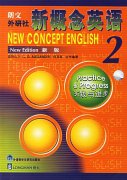根据原版英语词典编写的语法考题(2)
编辑:高中作文网
21. Everyone is equal before the law, and _______ breaks the law should be punished.
A. whichever B. whatever C. whoever D. however
22. For the first few months the babies looked so alike I couldn’t tell ______.
A. that was that B. which was which C. who was who D. what was what
23. I eat ______ I want and I still don’t seem to put on weight.
A. wherever B. whenever C. whichever D. whatever
24. Leach puts forward the idea ______ it is impossible to spoil a child.
A. what B. that C. which D. when
25. Never in my wildest dreams ______ to win first place last time.
A. I expected B. did I expect C. I have expected D. have I expected
26. Only when we landed ______ how badly the plane had been damaged.
A. we did see B. did we see C. we have seen D. have we seen
27. Not only ______ a pay increase, they want reduced hours as well.
A. do the nurses want B. the nurses want C. did the nurses want D. the nurses wanted
28. The service was terrible and ______ the food.
A. so that B. so as C. so was D. so as to
29. The book contains a lot of information, but _______ is not very well indexed.
A. this B. that C. it D. which
30. —Did you know Lucy was back in England? —Is she—since ______?
A. what B. how C. when D. which
【答案与解析】
01. C。首先要注意,定语从句修饰的先行词是someone,不是view。当先行词指人时,要用who来引导定语从句,不能用which;而that虽然可用于指人,但不用于引导非限制性定语从句;至于what,它根本不是关系代词,不能引导定语从句。
02. B。引导非限制性定语从句,表示类似this和that的含义,要用which。注意,如果在介词in的前面加上连词and,则此题要选that或this。
03. B。引导非限制性定语从句,表示类似this和that的含义,要用关系代词which。注意,如果在介词at的前面加上连词and,则此题要选that或this。
04. D。用于介词后引导定语从句时,要用关系代词which(指事物)或whom(指人)。
05. D。引导非限制性定语从句且指事物时,要用关系代词which。
06. C。引导非限制性定语从句且指事物时,要用关系代词which。注意句中的of course为插入成分,若拿掉则为:The higher the interest rate, the greater the financial risk, ______ cuts both ways.
07. A。引导定语从句且在定语从句中作定语时,有两个关系代词可以用,一个是whose,一个是which。其中whose相当于one’s的意义,which相当于this或that的意思。
08. C。先行词the point相当于一个抽象的地点,其后要用where来引导定语从句,此时where在定语从句中用作状语。
09. C。比较四个选项,只有before填入空格意思最通顺。before在此表示“在……之前”,句意为:在我们作出决定之前,还有谁有什么要补充的吗?
10. C。before在此表示“不等……就”“还没有……就”,答句的意思是:我还没来得及解释,他就把电话挂上了。
11. B。从句意上看,只有while填入空格意思最通顺。while的意思是“当……的时候”。句意为:你能帮我占住队中的这个位子吗?我去打个电话就回来。
12. C。until的意思是“直到”,同学们在做题时注意撇开句中的插入语sir。句意为:先生,经理要过一会儿才能见客,你能在这稍等片刻吗?
13. C。where在此引导地点状语从句,其意为“在……的地方”。句意为:但是,在英国人用can的地方,美国人常用may。
14. D。when在此表示“既然”,用于引导原因状语从句。又如:Why do you want a new job when you’ve got such a good one already? 你已经有一份这么好的工作了,你为什么还要找新的工作呢?
15. B。if not为英语惯用表达,其意为“如果是那样的话”。又如:He may be busy. If so, I’ll call later. If not, can I see him now? 他可能忙,如是这样,我以后再来拜访。他如不忙,我现在可以见他吗?
16. A。once在此表示条件,其意为“一旦”,句意为:我一旦找到住的地方,我就把地址发给你。
17. B。in case在此相当于一个副词的用法,其意为“以防万一”。又如:The sun is shining, but I’ll take an umbrella just in case. 现在是晴天,但我还是带上雨伞以防万一。
18. C。in case在此引导目的状语从句,其意为“以防”。又如:Some cyclists carry repair outfits in case they have a puncture. 有些骑自行车的人携带修理工具,以备万一车胎被扎破。
19. A。when在此表示“这时”“突然”,相当于并列连词。又如:The children were playing by the river when one of them slipped and fell in. 孩子们在河边玩耍,突然其中一个滑了一跤跌进河里。
20. D。while在此表示转折,意为“而”,又如:Prices are rising sharply, while incomes are lagging far behind. 物价飞涨而收入却远远落后。
21. C。whoever在此引导主语从句,相当于anyone who,其意为“无论谁”。全句意为:法律面前人人平等,无论谁违背法律都应受到惩罚。
22. B。tell which is which的意思是“分清哪个是哪个”。又如:The twins are so much alike that I can’t tell which is which. 这对双胞胎长得可真像,我都分不出谁是谁了。
23. D。whatever在此引导宾语从句,用作动词eat的宾语;同时whatever在宾语从句中用作动词want的宾语,由于A和B具有副词性质,不能用作宾语,所以排除。再根据句意,只能选D不能选C。
24. B。that在此引导同位语从句,修饰名词idea,表示idea的具体内容。
25. B。由于never本身含有否定意义,所以当它位于句首时,其后要用部分倒装。又如:Never in history had technology made such spectacular advances. 历史上科技从未有过这样神奇的进展。
26. B。按英语习惯,当“only+状语”位于句首时,其后的句子要用部分倒装。句意为:我们只是在着陆之后才看到飞机损坏的严重程度。又如:Only if a teacher has given permission is a student allowed to enter this room. 只有得到教师的允许,学生才可以进这间屋。
27. A。根据英语语法,当not only…but (also)…结构的not only…位于句首时,其后的句子要用倒装语序。又如:Not only has she been late three times, but she has also done no work. 她不仅仅迟到了三次;她还没干一点活。
28. C。当要表示后面所描述的肯定情况与前面的肯定情况一样时,英语习惯上用“so+助动词(连系动词be)+主语”这样的倒装句式,通常译为“……也一样”。又如:My brother was taught to read by my mother, and similarly, so was I. 我的兄弟认字是母亲教的,同样,我也是。
29. C。it在此用于指代前面提到的book或information。又如:The content of your essay is excellent, but it’s not very well expressed. 你那篇文章的内容好极了,但是表达方式不太好。
30. C。Is she—since when?是一种省略的表达,补充完整即为:Is she back in England? Since when has she been back? 类似的又如:I’ve got a new job.—Since when? 我有了份新工作。——什么时候开始的?








